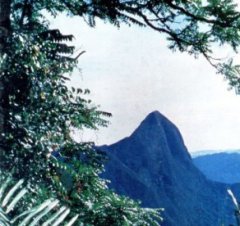Explain ecological succession
 An important principle of ecology is that ecosystems develop in a series of stages which must all occur in the right order – a process referred to as ‘succession’ which continues until a ‘climax’ is reached – a situation from which there is then little change, as it is the most stable one achievable in the circumstances.
An important principle of ecology is that ecosystems develop in a series of stages which must all occur in the right order – a process referred to as ‘succession’ which continues until a ‘climax’ is reached – a situation from which there is then little change, as it is the most stable one achievable in the circumstances.
The idea is an old one. In the 18th century, naturalists observed the process of succession in Scandinavian bogs. As Worster writes:
“water-loving hydrophytes would settle a pond and, by trapping mud with their roots, would eventually modify the environment to one more suited to mesophytes, or even xerophytes. The pond or lake would become a bog and then dry land covered by a dense forest.” [1]
The principle of succession was clearly formulated by Warming. He considered that it proceeded in a definite direction – towards a climax formation or final community. This notion Warming regarded as central to the new discipline of ecology.
Later (1899) H. C. Cowles made his pioneer studies of succession of plants on the sand dunes of Lake Michigan, while V. E. Shelford studied succession among animal populations. Both studies showed that as the dunes became older, so were the species of plants and animals inhabiting them completely replaced by different species.
Succession was regarded by Frederick Clements as fundamental to the developing science of ecology. Nature, he considered, did not move aimlessly but as a steady flow toward stability. In a specific environment, a clear progression could be plotted by the scientist through what Clements called a “sere” that begins in the pioneering stages with an unbalanced and relatively unstable assemblage and ends with a complex and stable equilibrium community, one that is capable of sustaining itself indefinitely.
Clements accentuated the role of climate in determining the nature of the sere and also established the principle that in any given habitat the sere could only end in a single climax (monoclimax). He was later to be seriously attacked on both these counts.
As Worster notes, Clement’s theory of succession and the climax undoubtedly reflected his
“underlying, almost metaphysical faith that the development of vegetation must resemble the growth process of an individual plant or animal organism.” [2]
|
Is your lunch causing global warming? Cars and factories are major sources of greenhouse gas emissions that are heating up the planet. But what you ... An article from: New York Times Upfront Book (Scholastic, Inc.) |

|
Wallmonkeys Ecological Footprint Symbol Peel and Stick Wall Decals (24 in W x 16 in H) Home (Wallmonkeys)
|